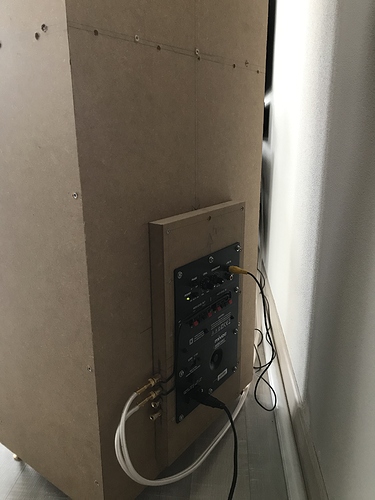Hi @anon73739233, much clearer now already ! First things first : allow me to state that unlike guitars, I do NOT like to think of speakers as ‘art’. To me they are almost pure science, with maybe just a little bit of ‘taste’ added.
A speaker should just reproduce any given signal as perfectly and naturally as possible. No art: just do your job as good as you can. A guitar may (please!) have its own sound, but a reproduction device should not.
You, of course, may have a different opinion. At least you know mine.
Seeing you’re building guitars, I should assume that you are no stranger to more advanced woodworking. I think I can narrow down your posts, to two questions :
- I need more knowledge, where can I get that ?!
- Any cheap but very good sounding design, that can get me addicted do DIYing speakers ?
Point-by-point:
1. Knowlegde. There are many books, but for you, I’d suggest two of them. The first is this one :
1.1 https://www.amazon.com/Loudspeaker-Design-Cookbook-Vance-Dickason/dp/1882580478
Target audience has litlle understanding but much interest on the subject, but (at least) hasn’t skipped the beta subjects on school.
Read and understand it thoroughly (takes a couple of months to more than a year), and try to put what you learnt in practice meanwhile.
Once you think you’ve understood, and you think you’re ready for it, you could try the following book :
1.2 https://www.amazon.com/Testing-Loudspeakers-Joseph-DAppolito/dp/1882580176
Careful, most people start too early with this one. It somewhat assumes that you already have the hard- and software to perform acoustical measurements, but you do not know how to put it to use.
To me, this was a proper introduction on the subject. But slow it down, take the time, and do not go forward until you have fully understood what was written before. Meanwhile, you should experiment, and have a lot of questions for yourself to answer.
1.3 On top of the above, it could be useful to suscribe yourselves to a specialist magazine. Most of them are in German strangely enough; I assume you cannot read them (http://www.hobby-hifi.de/ and http://www.klangundton-magazin.de/). They are ae targeted at ‘average’, ‘not too technical’ readers.
There is another English magazine; as far as I remember, it is targeted at quite a bit more advanced users. The name is Voice Coil Magazine; I can’t find a link quickly. Thanks for reminding, I should take a subscription ;-).
This was all maybe a bit negative, but now the things to really get you going :). I can think of two excellent-but-cheap projects, to get you started :
2. Nice designs  :
:
2.1. Cyburgs Needle (or Tangband Needle). Can’t quickly find a good link with all the plans, but can probaly supply you with the design.
This design is maximum bang-for-the-buck : very natural and quite ‘big’ sound, for less than 100 bucks a pair.
You’ll be amazed by what’s possible with just one 10cm driver. You’ll learn how much of a difference a crossover can make.
Yes, it has severe limitations : not much is happing below 50-60Hz, and do not ask too much loudness from them. But this is FUN FUN FUN!
2.2. Or, take the LBVS : http://forum.zelfbouwaudio.nl/viewtopic.php?t=15285 . The fact that this is Dutch (just as I am) is pure coincidence.
This is really an excellent, low budget design. Costs a little more than the tangbands, but the rewards are more than worth it. Could in fact be a speaker, that many could live with the rest of their lives with.
Downsides : a little more costs, a little more added complexity (by that I mean : you might not understand what you as did just as well, as you would do with the needles).
2.3 A different, but more advanced take, could be to take one of the designs from the brand Visaton : https://boxsim-db.de/ . I’m sory, German again…
The big advantage here, is that Visaton has simulation software for their own drivers. Yup, for WIndows. But it is the easiest to use for a starter, by a very far stretch, In simple words : you can ‘predict’ in their software, how the speaker will behave/sound once applied in a particular enclore, with your own designed crossover. This software can be found here : http://www.boxsim.de/ . It also means, that you can adjust the designs to your own ‘taste’ (assuming enough knowlegde on your side).
The downside : it assumes you already have a fair share of knowledge, on the information in the books above…
I think I’ve already given too much information for you to digest…Let’s see what comes out of it.
Summarizing : for pure pleasure and fun building as a starter : build 2.1. Or, if you want to enjoy your build much longer : build 2.2. Read up in in books or online, meanwhile.



